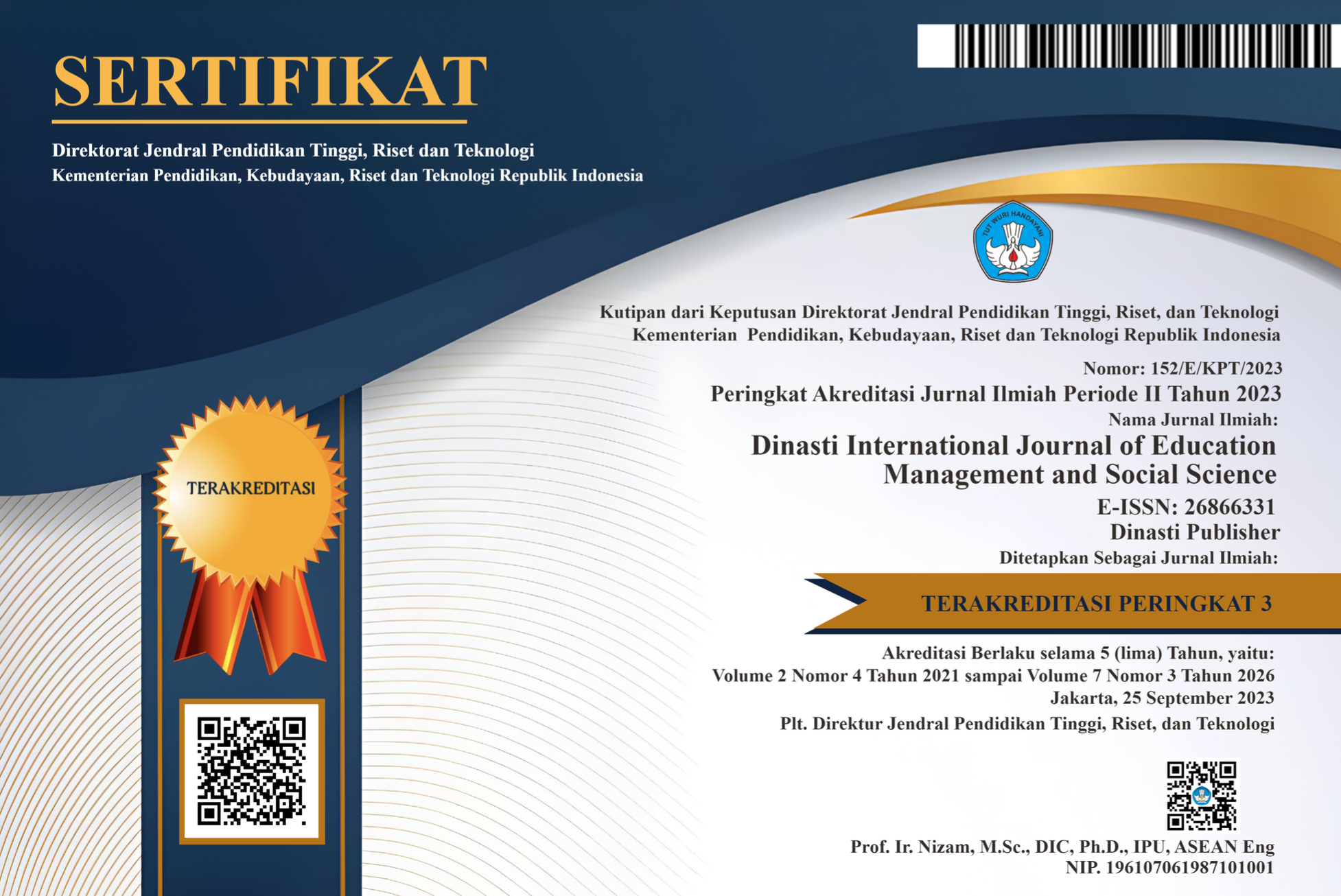In House Training Needs Analysis For Employees
DOI:
https://doi.org/10.31933/dijemss.v4i6.2000Keywords:
Needs analysis, In House TrainingAbstract
The purpose of this study is to This research is aimed at knowing the provision of job training (in house training) to employees, consistently and continuously guaranteed in quantity, but on the other hand training is needed that is guaranteed in quality. To ensure that the training that will be carried out is in accordance with the needs of the organization, position, and individual employees, so that the quality is guaranteed, a training needs analysis is needed beforehand. This study uses a descriptive qualitative approach with a case study method that uses source triangulation techniques with the objects in the study being all organizational components, both leaders and staff. In data processing, data collection, data reduction, data display, and conclusion and verification are carried out. Research result, revealed that analyzing training needs involves all organizational components. Where, consideration of training needs lies at the level of organization and position. It was concluded that at the individual analysis level it is not used as a basis for determining training needs, so that it is possible for all employees to experience improvement. The results of the study show that in-house training is urgently needed to improve the quality of human resources, efficiency and productivity of employees as a whole.
References
Veithzal Rivai Zainal. Performance Management For Companies And Organizations. Publisher: BPE UGM ISBN
Thomas Widodo 2021TRAINING PLANNING AND EVALUATION Published by Publisher CV Makeda Multimedia Sarana Fathoni, Abdurahmat, 2006. Human Resource Management. Jakarta, Rineka Cipta.
Handoko, Hani, 1996. Personnel Management and Human Resources. BPFE- Yogyakarta.
Handayaningrat, Soewarno, 1965. Introduction to Administration and Management Studies. Jakarta, Mt Great.
Kaswan. 2011. Training and Development (to Improve HR Performance). Bandung: Alphabet.
Sugiyono. 2009. Quantitative, Qualitative and R&D Research Methods. Bandung: Alphabet.
In-House Training Needs Analysis: Journal, el-Idare, Vol. 1, No. 2, December,158 – 172
Canadian Rabial, TRAINING NEEDS ANALYSIS IN-HOUSE TRAINING Jurnal el-Idare, Vol. 1, No. 2, December,158 – 172
Vetty Ilona ANALYSIS OF TRAINING NEEDS IN GOVERNMENT Civil Service VOL. 12, No.1, June 2018 : 23 – 3
Nurmasari IMPLEMENTATION OF EMPLOYEE EDUCATION AND TRAINING IN THE OFFICE
REGIONAL PERSONNEL AGENCY IN BENGKALIS PUBLIC DISTRICT, Vol.2, No.1, April, pp 1-15 (2016)
KD Krisnawati1, IW THE INFLUENCE OF WORK COMPETENCE ON EMPLOYEE PERFORMANCE Section 212
Teguh Hendra THE INFLUENCE OF EDUCATION AND TRAINING (DIKLAT) ON THE PERFORMANCE OF PERMANENT EMPLOYEES AT THE AVIATION SECURITY UNIT OPERATION & SERVICE DIVISION PT. ANGKASA PURA II (PERSERO) SULTAN SYARIF KASIM II AIRPORT BRANCH, PEKANBARU RICKY ARNOLD NGGILI (2018) TRAINING MANAGEMENT
Downloads
Published
How to Cite
Issue
Section
License
Authors who publish their manuscripts in this journal agree to the following conditions:
- The copyright on each article belongs to the author(s).
- The author acknowledges that the Dinasti International Journal of Education Management and Social Science (DIJEMSS) has the right to be the first to publish with a Creative Commons Attribution 4.0 International license (Attribution 4.0 International (CC BY 4.0).
- Authors can submit articles separately, arrange for the non-exclusive distribution of manuscripts that have been published in this journal into other versions (e.g., sent to the author's institutional repository, publication into books, etc.), by acknowledging that the manuscript has been published for the first time in the Dinasti International Journal of Education Management and Social Science (DIJEMSS).















































